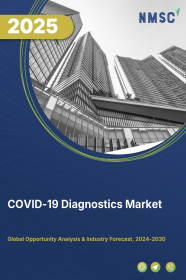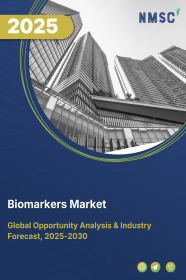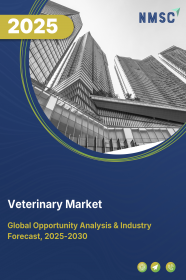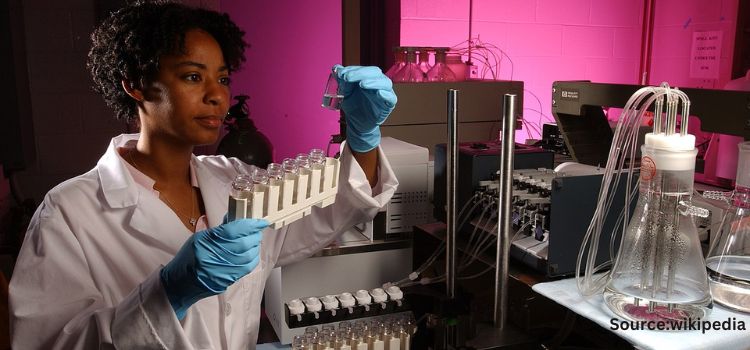
COVID-19 Diagnostics Market by Product & Service (Instruments, Reagents & Kits, and Services), by Sample Type (Nasopharyngeal (NP) Swabs, Oropharyngeal (OP) Swabs, Nasal Swabs, Blood, and Others), by Technology (Polymerase Chain Reaction (PCR), Enzyme-Linked Immunosorbent Assay (ELISA), Lateral Flow Immunoassay (LFIA), and Others) and Others- Global Opportunity Analysis and Industry Forecast 2024-2030
US Tariff Impact on COVID-19 Diagnostics Market
Trump Tariffs Are Reshaping Global Business
Market Definition
The global COVID-19 Diagnostics Market size was valued at 42.09 billion in 2023 and is predicted to reach 74.17 by 2030 with a CAGR of 8.4% from 2024-2030. COVID-19 diagnostics refers to the range of tests and technologies used to detect the novel coronavirus, SARS-CoV-2.
The most common types of COVID-19 diagnostic tests include molecular tests, such as reverse transcription polymerase chain reaction (RT-PCR) tests, that detect the virus's genetic material, and antigen tests, which detect proteins on the virus's surface. Other types of tests, such as antibody tests, detect the presence of antibodies in a person's blood, indicating past infection with the virus.
The use of COVID-19 diagnostics has been critical in the ongoing efforts to contain the spread of the virus and mitigate its impact on public health and the global economy. Accurate and rapid diagnostic testing is essential for identifying infected individuals and providing appropriate medical care, as well as for tracking and monitoring the spread of the virus.
Market Dynamics and Trends
COVID-19 diagnostics is rapidly growing due to the increasing demand to identify and contain the spread of the virus. Governments and healthcare organizations have been heavily investing in COVID-19 testing to better understand and manage the pandemic.
Moreover, the increasing availability and accessibility of COVID-19 testing are significantly boosting the growth of the COVID-19 diagnostics market. The development of rapid antigen tests and at-home testing kits has made it easier for individuals to get tested, leading to greater demand for testing products.
Furthermore, the emergence of new variants of the virus has highlighted the need for continued testing and monitoring, leading to ongoing demand for COVID-19 diagnostics products. The development of new and innovative diagnostic technologies, such as CRISPR-based tests, is further fuelling the growth of the market.
However, the development and approval of new diagnostic tests can be a complex and lengthy process, and some tests may face regulatory hurdles before they can be marketed and sold. This can slow down the introduction of new and innovative testing technologies into the market, which may restrain the growth of the market. On the contrary, the introduction of new technologies such as CRISPR, digital diagnostics, and AI-powered diagnostics tools are expected to create ample growth opportunities for the market in the future.
Market Segmentation and Scope of Study
The global COVID-19 diagnostics market is segmented based on product & service, sample type, technology, mode, and end use, and region. Based on product & service, the market is classified into instruments, reagents & kits, and services.
Based on the sample type, the market is segmented into nasopharyngeal (np) swabs, oropharyngeal (op) swabs, nasal swabs, blood, and others. Based on technology, the market is divided into polymerase chain reaction (PCR), enzyme-linked immunosorbent assay (ELISA), lateral flow immunoassay (LFIA), and others.
Based on mode, the market is categorized into, point-of-care (POC) and non-point-of-care (non-POC). Based on end use, the market is divided into laboratories, hospitals, diagnostic centers and clinics, and others. Regional breakdown and analysis of each of the aforesaid classifications include regions comprising North America, Europe, Asia-Pacific, and RoW.
Geographical Analysis
North America dominates the global COVID-19 diagnostics market share and is potently expected to remain dominant in the market throughout the forecast period. The developed healthcare industry in North America serves as a major driver of the COVID-19 diagnostics market by providing a highly advanced healthcare infrastructure, high demand for diagnostic tests, government initiatives, technological advancements, and regulatory approvals. These factors have contributed to the development and distribution of more accurate and reliable COVID-19 diagnostic tests in the region, driving the growth of the market.
In addition, the presence of key market players such as Quest diagnostics and Abbott laboratories plays a significant role in the growth of the COVID-19 diagnostics market in the region. As of February 2022, Quest diagnostics performed and reported approximately 72.2 million COVID-19 molecular diagnostic and serology tests since 2020.
On the other hand, Asia Pacific shows substantial growth in the global COVID-19 diagnostics market owing to the large number of COVID-19 cases in countries such as China and India and a need to quickly identify and contain the spread of the virus.
This has led to increased demand for COVID-19 testing products and technologies, including molecular and antigen tests. According to WHO, in China, from January 2020 to February 2023, there have been 98,932,687 confirmed cases of COVID-19 with 119,510 deaths.
Moreover, various government initiatives and funding support the development, manufacturing, and distribution of COVID-19 diagnostic products. These policies and funding have helped to accelerate the development of COVID-19 testing products and technologies. For instance, in November 2021, The Asian Development Bank (ADB) approved a USD 1.5 billion loan to help the Government of India purchase safe and effective vaccines against the coronavirus disease (COVID-19).
Competitive Landscape
The COVID-19 diagnostics market trends include several market players such as F. Hoffmann-La Roche Ltd, Abbott Laboratories, Danaher Corporation, Hologic Inc., Siemens Healthineers AG, Quidel Corporation, bioMérieux SA, Quest Diagnostics Inc., Thermo Fisher Scientific Inc., and PerkinElmer Inc., among others. These market players are adopting various strategies such as product launches and collaboration to maintain their dominance in the global COVID-19 diagnostics market.
For instance, in November 2022, Hologic, Inc. announced the offering of its Panther Fusion SARS-CoV-2/Flu A/B/RSV assay and its Novodiag RESP-4 molecular diagnostic test for sale in the European Union in time for the northern hemisphere’s respiratory viral season. Both assays detect and differentiate four of the most prevalent respiratory viruses that can present with similar clinical symptoms.
Also, in September 2022, Roche launched a COVID-19 test for researchers that detects the subvariant BA.2.75 and can differentiate it from BA.4 or BA.5. This innovative test is a very precise tool that targets mutations detected in the BA.2.75 subvariant, giving valuable epidemiological insights in monitoring the potential impact of medicines, vaccinations, and public health measures.
Key Benefits
-
The report provides quantitative analysis and estimations of the COVID-19 Diagnostics Market from 2024 to 2030, which assists in identifying the prevailing market opportunities.
-
The study comprises a deep-dive analysis of the current and future COVID-19 diagnostics market trends to depict prevalent investment pockets in the market.
-
Information related to key drivers, restraints, and opportunities and their impact on the COVID-19 Diagnostics Market is provided in the report.
-
A competitive analysis of the players, along with their market share is provided in the report.
-
SWOT analysis and Porter's Five Forces model are elaborated in the study.
-
Value chain analysis in the market study provides a clear picture of the roles of stakeholders.
COVID-19 Diagnostics Market Key Segments
By Product & Service
-
Instruments
-
Reagents & Kits
-
Services
By Sample Type
-
Nasopharyngeal (NP) Swabs
-
Oropharyngeal (OP) Swabs
-
Nasal Swabs
-
Blood
-
Others
By Technology
-
Polymerase Chain Reaction (PCR)
-
Enzyme-Linked Immunosorbent Assay (ELISA)
-
Lateral Flow Immunoassay (LFIA)
-
Others
By Mode
-
Point-of-Care (PoC)
-
Non-Point-of-Care (Non-Poc)
By End Use
-
Laboratories
-
Hospitals
-
Diagnostic Centers & Clinics
-
Others
By Region
-
North America
-
The U.S.
-
Canada
-
Mexico
-
-
Europe
-
The U.K.
-
Germany
-
France
-
Italy
-
Spain
-
Denmark
-
Netherlands
-
Finland
-
Sweden
-
Norway
-
Russia
-
Rest of Europe
-
-
Asia-Pacific
-
China
-
Japan
-
India
-
South Korea
-
Australia
-
Indonesia
-
Singapore
-
Taiwan
-
Thailand
-
Rest of Asia-Pacific
-
-
Rest of the World (RoW)
-
Latin America
-
Middle East
-
Africa
-
Key Players
-
F. Hoffmann-La Roche Ltd.
-
Abbott Laboratories
-
Danaher Corporation
-
Hologic Inc.
-
Siemens Healthineers AG
-
Quidel Corporation
-
bioMérieux SA
-
Quest Diagnostics Inc.
-
Thermo Fisher Scientific Inc.
-
PerkinElmer Inc.
REPORT SCOPE AND SEGMENTATION:
|
Parameters |
Details |
|
Market Size in 2023 |
USD 42.09 Billion |
|
Revenue Forecast in 2030 |
USD 74.17 Billion |
|
Growth Rate |
CAGR of 8.4% from 2024 to 2030 |
|
Analysis Period |
2023–2030 |
|
Base Year Considered |
2023 |
|
Forecast Period |
2024–2030 |
|
Market Size Estimation |
Billion (USD) |
|
Growth Factors |
|
|
Countries Covered |
28 |
|
Companies Profiled |
10 |
|
Market Share |
Available for 10 companies |
|
Customization Scope |
Free customization (equivalent to up to 80 working hours of analysts) after purchase. Addition or alteration to country, regional, and segment scope. |
|
Pricing and Purchase Options |
Avail customized purchase options to meet your exact research needs. |

















 Speak to Our Analyst
Speak to Our Analyst




















